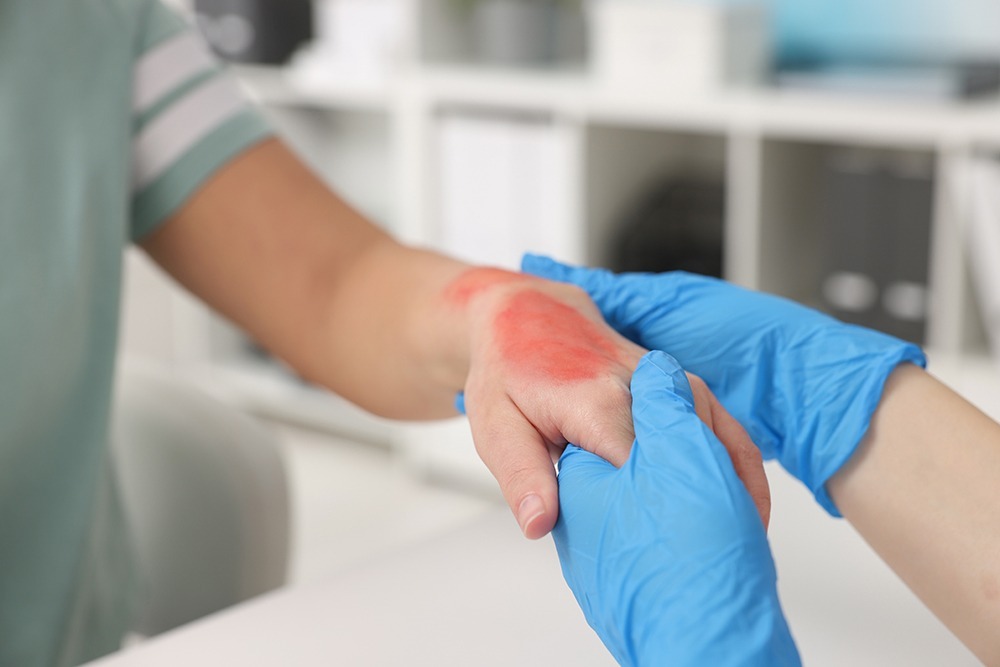Recovering More from Your Burn Injury with a Lawyer’s Help
Share:
Burn injuries can happen in the blink of an eye—whether from a kitchen accident, workplace mishap, or exposure to hazardous chemicals. A burn can range from a mild, superficial injury to something far more serious, causing excruciating pain and long-term damage. The moments after suffering a burn injury are crucial in determining how quickly you recover, how much pain you’ll endure, and whether you’ll face lasting consequences.
If you or a loved one has suffered a burn injury, it’s important to know exactly what to do immediately after the injury to minimize the damage and ensure your best chance at recovery. Here’s your step-by-step guide to handling the aftermath of a burn injury, from first aid to consulting with a personal injury attorney.
Assess the Severity of the Burn
The first step after suffering a burn is determining how serious it is. Burns are classified into three categories:
First-degree burns: Affect only the outer layer of skin, causing redness, pain, and swelling (like a mild sunburn).
Second-degree burns: Involve the outer and underlying skin layers, causing blisters, severe pain, and swelling.
Third-degree burns: Damage all layers of skin and possibly deeper tissues, resulting in charring, numbness, and significant destruction of the skin.
What to do:
- For first-degree burns: You can treat these at home with basic first aid (more on this below).
- For second-degree burns: Seek medical attention as soon as possible.
- For third-degree burns: Call 911 immediately. These are medical emergencies that require urgent attention.
Apply Immediate First Aid (for Minor Burns)
If the burn is minor (first-degree or some second-degree burns), you can start by administering basic first aid to reduce pain and prevent further damage.
What to do:
- Cool the burn: Place the burned area under cool (not cold) running water for at least 10-20 minutes. This helps reduce heat and prevents further injury.
- Don’t use ice: Ice can further damage the tissue, especially with severe burns.
- Cover the burn: After cooling the burn, cover it with a clean, non-stick bandage or cloth to protect it from infection.
- Avoid popping blisters: If blisters form, don’t burst them, as this increases the risk of infection.
Seek Medical Attention
Even if you feel like the burn isn’t that severe, it’s important to seek professional medical attention, especially if:
- The burn is larger than 3 inches in diameter or located on sensitive areas (like your face, hands, feet, or genitals).
- You experience severe pain or have trouble breathing.
- The burn involves chemicals, electricity, or radiation exposure.
What to do:
- Visit the ER: For second-degree burns and beyond, or if the burn looks severe, go straight to the emergency room. Emergency room staff will be able to properly assess the burn, clean the wound, and apply medical-grade dressings.
- Call your doctor: For minor burns, if you’re not sure whether you need medical attention, call your healthcare provider. They may recommend further treatment or send you to a burn specialist.
Document the Incident
If your burn injury was caused by an accident on someone else’s property, a faulty product, or negligence, documenting the situation is crucial. This can help you with potential insurance claims or legal action later on.
What to do:
- Take photos: Photograph the burn injury immediately, including the affected area and the environment where the injury occurred. Take multiple shots over time to show how the injury progresses.
- Write down details: Record everything that led up to the injury: the date, time, cause, and any contributing factors (e.g., wet floors, defective products, or lack of warning signs).
- Gather witnesses: If anyone witnessed the accident or can provide helpful information, get their contact details. Their statements may be valuable in your case.
Get Professional Medical Treatment
Even after receiving initial first aid, burn injuries require professional care. A doctor or burn specialist will provide treatment to promote healing, prevent infection, and minimize scarring. If the burn is severe, you might require hospitalization, pain management, skin grafts, or physical therapy.
What to do:
- Follow-up care: If you’ve been treated for a burn, it’s crucial to follow up with your doctor to monitor healing. They may prescribe antibiotics or pain medication to manage infection and discomfort.
- Burn therapy: Severe burns often require physical therapy or rehabilitation to improve mobility and reduce scarring. A burn specialist can help you with the appropriate treatment plan.
Consult with an Experienced Personal Injury Attorney
If your burn injury was caused by someone else’s negligence—whether at work, in a public place, or due to a faulty product—it’s time to consult with a personal injury attorney. You may be entitled to compensation for medical bills, lost wages, pain and suffering, and long-term care.
What to do:
- Schedule a consultation: Contact a personal injury lawyer who specializes in burn injury cases. Many attorneys offer free consultations and can help you understand your legal rights.
- Prepare your case: Bring all documentation, including medical records, photographs of the injury, witness statements, and any evidence related to the incident. A skilled attorney can help you navigate the legal process and fight for the compensation you deserve.
Take Care of Your Emotional and Mental Health
Recovering from a burn injury isn’t just physical—it can also take a toll on your mental and emotional well-being. Dealing with pain, scarring, and the possibility of long-term effects can be overwhelming.
What to do:
- Seek support: Talk to friends, family, or a counselor about the emotional impact of your injury. Support groups for burn victims can also provide a sense of community and understanding.
- Focus on self-care: Practice stress-relieving activities, like meditation, yoga, or breathing exercises. Taking care of your mental health is just as important as your physical recovery.
Final Thoughts: Recovering and Moving Forward
A burn injury can change your life in an instant, but with the right care and attention, recovery is possible. By following these crucial steps—seeking immediate first aid, getting professional medical treatment, documenting the injury, and consulting with a personal injury attorney—you give yourself the best chance at recovery and legal compensation.
Take Control of Your Recovery After a Burn Injury
If you’ve suffered a burn injury, don’t face the aftermath alone. Act quickly to protect your health and legal rights. Consult with an experienced personal injury attorney to ensure you receive the compensation you deserve. Contact DuFault Law today for a free consultation and let us help guide you through the process.
Call us at (239) 422-6400 or email us at contact@dufaultlaw.com to get started. Your recovery begins now!



Comments are closed